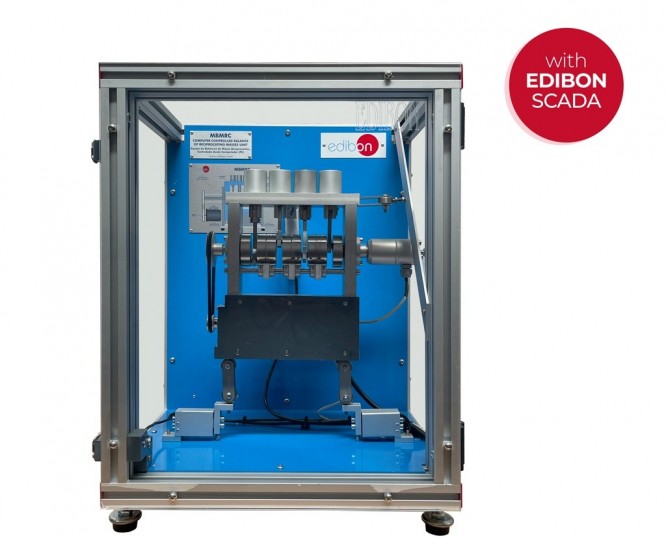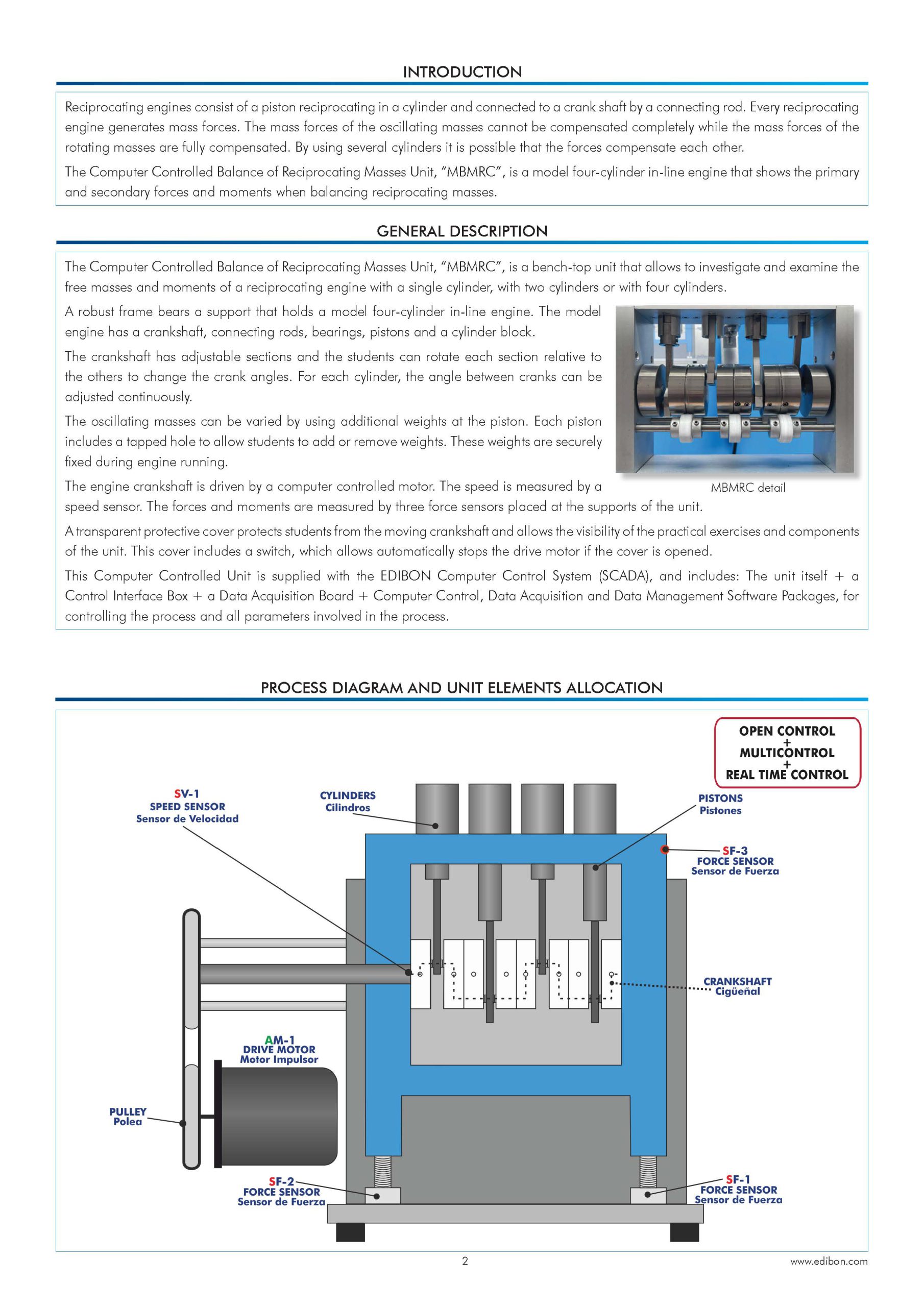
Computer Controlled Balance of Reciprocating Masses Unit
INTRODUCTION
Reciprocating engines consist of a piston reciprocating in a cylinder and connected to a crank shaft by a connecting rod. Every reciprocating engine generates mass forces. The mass forces of the oscillating masses cannot be compensated completely while the mass forces of the rotating masses are fully compensated. By using several cylinders it is possible that the forces compensate each other.
The Computer Controlled Balance of Reciprocating Masses Unit, “MBMRC”, is a model four-cylinder in-line engine that shows the primary and secondary forces and moments when balancing reciprocating masses.
EXERCISES AND PRACTICAL POSSIBILITIES
- Study of the polygons of forces and polygon of moment for a symmetrical engine.
- Study of first and second forces and moments for different crankshaft settings: single cylinder.
- Study of first and second forces and moments for different crankshaft setting: two-cylinder, 180° angle between cranks.
- Study of first and second forces and moments for different crankshaft settings: four-cylinder, non-symmetrical, 90° angle between cranks.
- Study of first and second forces and moments for different crankshaft settings: four-cylinder, symmetrical, 180° angle between cranks.
- Study of the effect of mass forces in dependence on the speed.
- Study of the effect of mass forces in dependence on the piston mass.



